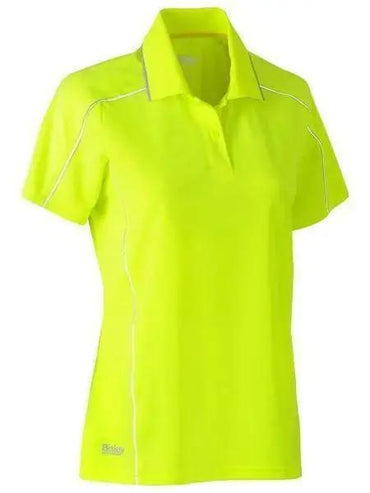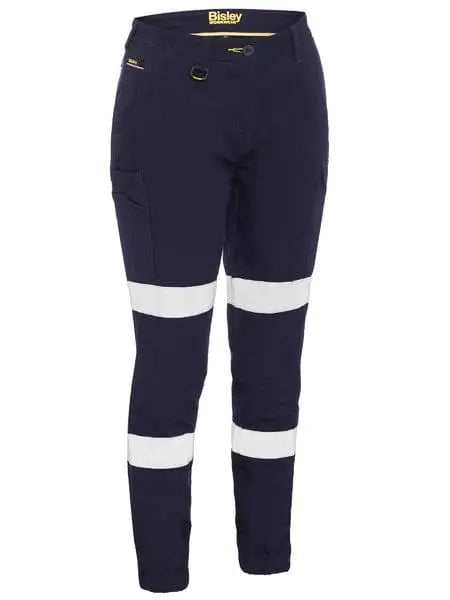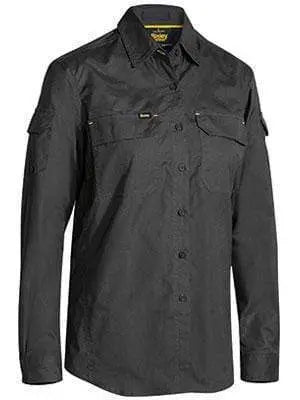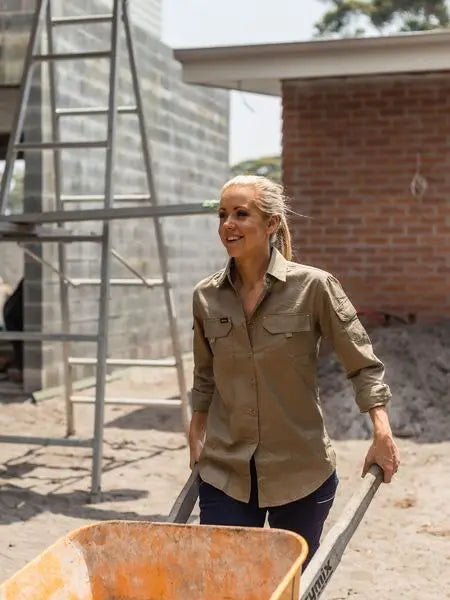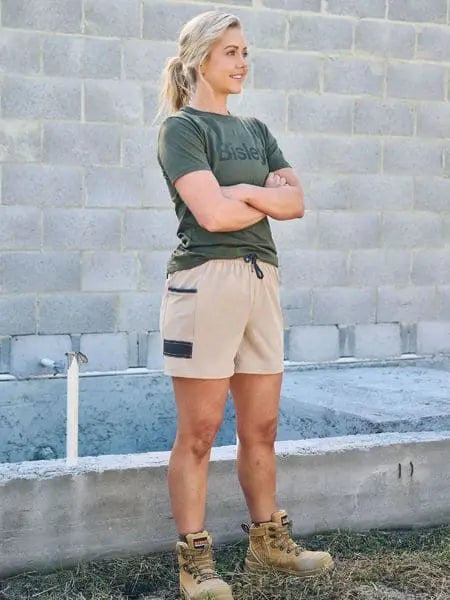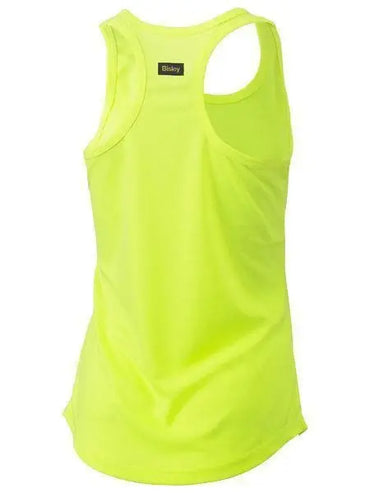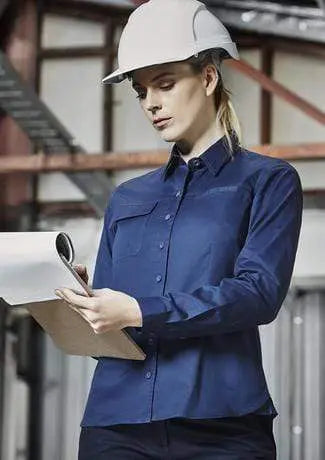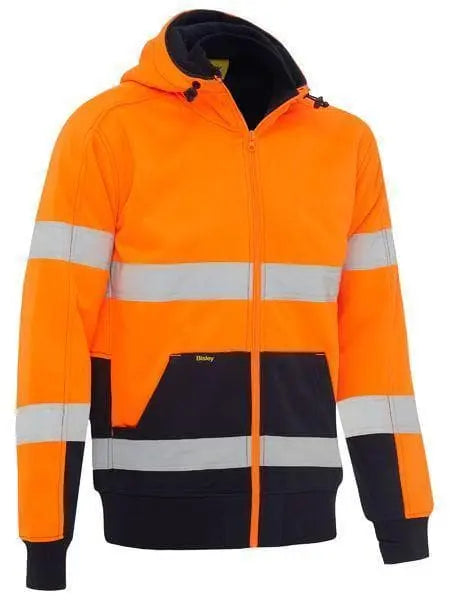Women's Hi Vis Workwear
-
Casual Wear
Unisex Hi-Vis Safety Vest with ID & Utility Pockets SW04
This vest is made of 120gsm polyester with a warp-knitted structure, ensuring durability and abrasion resistance. It features a front resin zip closure, a clear ID...
Regular price $7.99Sale price $7.99 Regular priceUnit price per -
Work Wear
Bisley Women's Cool Mesh Polo Shirt BKL1425
Bisley Women's Cool Mesh Polo Shirt BKL1425 Lightweight, breathable and quick dry cool mesh fabric Side panels with additional reflective piping Knit ribbed collar with grey...
Regular price $27.99Sale price $27.99 Regular priceUnit price per -
Work Wear
Bisley Workwear Women's Flex & Move Taped Jegging Pant BPL6026T
Bisley Workwear Women's Flex & Move Taped Jegging BPL6026T Mid-rise slim fit Stretch reflective biomotion tape Stretch knit denim terry with elastic waistband for extra comfort...
Regular price $61.99Sale price $61.99 Regular priceUnit price per -
Work Wear
Bisley Women's Soft Shell Jacket BJL6060
Bisley Women's Soft Shell Jacket BJL6060 Fabric waterproof rating: Up to 7,500mm H2O Showerproof garment Mechanical stretch showerproof twill with bonded internal fleece Eyelet ventilation under...
Regular price $65.99Sale price $65.99 Regular priceUnit price per -
Worl Wear
Bisley Women's Taped Cotton Cargo Cuffed Pants BPL6028T
Bisley Women's Taped Cotton Cargo Cuffed Pants BPL6028T Stretch Reflective biomotion tape Stretch mid-rise fit with curved waistband for comfort and movement Cuffed tapered stovepipe style...
Regular price $57.99Sale price $57.99 Regular priceUnit price per -
Work Wear
Bisley Stretched Cotton Drill Cuffed Pants BPC6028
Bisley Stretched Cotton Drill Cuffed Pants BPC6028 Stretch mid-rise fit with curved waistband for comfort and movement Cuffed stovepipe style with heavy gauge thread and reinforced...
Regular price $47.99Sale price $47.99 Regular priceUnit price per -
Work Wear
SYZMIK Women’s Lightweight Tradie Shirt - Short Sleeve ZWL120
The Women’s Lightweight Tradie Shirt - Short Sleeve is made of 145 GSM lightweight cotton twill that keeps the wearer cool in summer. This shirt features...
Regular price $34.99Sale price $34.99 Regular priceUnit price per -
Casual Wear
Winning Spirit safety vest with shoulder tapes SW43
Winning Spirit safety vest with shoulder tapes SW43 FABRIC: 120gsm - 100% Polyester, Warp Knitted STYLE: Velcro closure on front. Grey banding all around to protect...
Regular price $5.99Sale price $5.99 Regular priceUnit price per -
Work Wear
Dnc Workwear Women’s Hi-vis 2 Tone Cool-breeze Long Sleeve Cotton Shirt - 3940
This Women’s Hi-Vis 2 Tone Cool-Breeze Long Sleeve Cotton Shirt is made from lightweight cotton fabric that prevents static and provides electrical protection. This industrial worksite...
Regular price $34.99Sale price $34.99 Regular priceUnit price per -
Work Wear
Bisley Workwear Women's X Airflow™ Ripstop Shirt Long Sleeve BL6414
Bisley Workwear Women's X Airflow™ Ripstop Shirt Long Sleeve BL6414 Twin chest patch pockets with touch tape closure Contoured shape two piece sleeve Twin sleeve patch...
Regular price $56.99Sale price $56.99 Regular priceUnit price per -
Work Wear
Bisley Softshell Vest BV0570
Bisley Softshell Vest BV0570 Showerproof fabric with breathable membrane Waterproof rating: Up to 8,000mm H2O Bonded internal fleece face Two chest pockets with waterproof zip closure...
Regular price $65.99Sale price $65.99 Regular priceUnit price per -
Work Wear
Bisley Workwear Women's Flex & Move 4 Way Stretch Shorts BSHL1331
Bisley Workwear Women's Flex & Move 4 Way Stretch Shorts BSHL1331 4-way stretch fabric with elastic waistband for extra comfort and movement Cordura® on high stress...
Regular price $47.99Sale price $47.99 Regular priceUnit price per -
Work Wear
Bisley Women's Racer Back Singlet BKL0439
Bisley Women's Racer Back Singlet BKL0439 Lightweight polyester cool mesh Racer back singlet styling UPF 40 sun protection rating Non-compliant hi vis aesthetic Bisley exclusive Fresche®...
Regular price $16.99Sale price $16.99 Regular priceUnit price per -
Work Wear
SYZMIK Women’s Plain Utility Shorts ZWL011
The Women’s Plain Utility Shorts have a feminine fit and is comfortable to wear as it is made of cotton twill. These utility shorts have reinforced...
Regular price $33.99Sale price $33.99 Regular priceUnit price per -
Work Wear
SYZMIK Women's Rugged Cooling Vented Shorts ZS704
100% Square Weave Cotton Ripstop - 240 gsm Back waist venting to maximise airflow and keep you cool Mechanical stretch to give you more freedom of...
Regular price $43.99Sale price $43.99 Regular priceUnit price per -
Work Wear
SYZMIK Women’s Lightweight Long Sleeve Tradie Shirt ZWL121
Stay cool at work with the Women’s Lightweight Long Sleeve Tradie Shirt. This long sleeve shirt is made of 100 percent cotton twill with triple stitched...
Regular price $37.99Sale price $37.99 Regular priceUnit price per -
Work Wear
Bisley Tapered Hi Vis Fleece Hoodie With Sherpa BK6988T
Explore the Bisley Tapered Hi Vis Fleece Hoodie With Sherpa BK6988T Stretch reflective tape in hoop pattern for day/night visibility Premium low-pill polyester fleece outer with...
Regular price $91.99Sale price $91.99 Regular priceUnit price per -
Work Wear
Bisley X Taped Hi Vis Zip Front Fleece Rail Hoodie BK6819XT
Experience Comfort and Safety with Bisley X Taped Hi Vis Zip Front Fleece Rail Hoodie BK6819XT Reflective taped H pattern around body with X back and...
Regular price $76.99Sale price $76.99 Regular priceUnit price per -
Work Wear
Bisley Women's Taped Hi Vis Polo Shirt BKL1225T
Bisley Women's Short Sleeve Taped Hi Vis Polo Shirt BKL1225T Bisley signature perforated heat applied reflective tape in hoop pattern for day/night visibility Lightweight, breathable polyester...
Regular price $44.99Sale price $44.99 Regular priceUnit price per -
KingGee Women's HyperFreeze Spliced Long Sleeve Work Polo Shirt K44730
Discover the KingGee Women's HyperFreeze Spliced Long Sleeve Work Polo Shirt K44730 Our women's range features everything you've come to expect from KingGee - with a...
Regular price $40.99Sale price $40.99 Regular priceUnit price per -
Work Wear
Bisley Workwear Women's Rough Rider Denim Stretch Jean Pant BPL6712
Bisley Workwear Women's Rough Rider Denim Stretch Jean BPL6712 Stretch denim for extra comfort Regular fit leg and waist Five pocket jean with six belt loops...
Regular price $49.99Sale price $49.99 Regular priceUnit price per -
Work Wear
Bisley Women's Fleece Crew Neck Jumper BKL6723
Bisley Women's Fleece Crew Neck Jumper BKL6723 Low pill brushed fleece with a plush inner Crew neck with rib neck band Front shaped panel seam with...
Regular price $43.99Sale price $43.99 Regular priceUnit price per -
Work Wear
Hard Yakka Women's 3056 Side Zip Work Boot Y60245
Hard Yakka Women's 3056 Side Zip Work Boot Y60245 Wide Profile Steel toe Women's Specific Fit Neoprene Hoddie - zip hold and Anti-Rub Protection Genuine YKK...
Regular price $136.99Sale price $136.99 Regular priceUnit price per -
Work Wear
SYZMIK Women’s Rugged Cooling Pants ZP704
SYZMIK Women’s Rugged Cooling Pants ZP704 The Women’s Rugged Cooling Pants are made of 100 percent square weave cotton ripstop. This rugged cooling pants are durable and...
Regular price $55.99Sale price $55.99 Regular priceUnit price per







